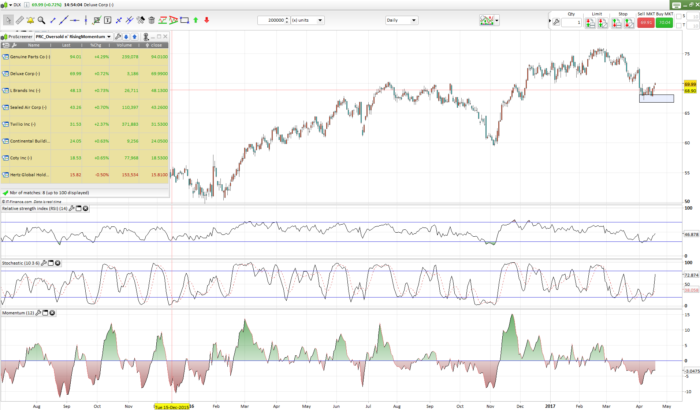It could take anywhere between a few weeks to 6 months for the completion of a wedge. These patterns have an upward trend line and a downward trend line evolving towards the same point. Whereas only one line is upward/downward sloping in case of triangle patterns. The rising wedge chart pattern is formed when a market consolidates between two converging trend lines i.e. support and resistance lines.

A falling wedge pattern is made from two converging trend lines when the price movements start to show lower highs and lower lows in a technical chart. In technical analysis, a descending wedge pattern is a chart pattern that signals that the previous downtrend is coming to an end and that prices are likely to start rising. Descending broadening wedge patterns has a few advantages over other reversal patterns. The downward breakout is one of the most reliable, creating big price downtrends.
Is a triple bottom bullish or bearish?
In trend continuation, the FWP can be seen as a second chance for traders to profit from the upward trend. With a good placement of stop loss, traders are not trapped if the chart does not eventually continue. The profit target is set by measuring the height of the back of the wedge and extending that distance up from the trend line breakout. The entry is placed when the price breaks above the top side of the wedge or when the price finds support at the upper trend line.
Buying non-busted patterns with a short-term duration from the trend start to the pattern’s start results in better performance. Busted patterns do best using a medium-term duration from the trend start. A wedge calls for trading to be done when the straight lines are converging i.e. within the time period of pattern formation.
- Once the upside barrier is breached, expect this region to act as a support during any corrections .
- These are consolidation patterns in which the price does not follow the trend but the reversal of existing is on cards.
- The ascending triangle is a bullish continuation pattern, and it most likely tells when the stock will breakout.
- The first peak is called the left shoulder, the second peak is called the head, and the third peak is called the right shoulder.
- A descending triangle is a bearish continuation pattern that appears during a downtrend.
A third wave forms afterwards but the sellers lose control again after the formation of new lowest points. The databases I built over several decades doesn’t identify every chart pattern. The ascending triangle is a bullish continuation pattern, and it most likely tells when the stock will breakout.
In the event of a downward wedge, the price is expected to break through the resistance, and in the case of an upward wedge, the price is expected to break through the support. The breakout of the wedge is a reversal pattern since it runs counter to the overall trend. The trend then returns to the support level and continues to drop steadily, breaking through the support line. Trade the breakout or break down; buy above breakout point in falling wedge and short sell below break down point in rising wedge. As with all technical patterns, this breakout of the wedge should ideally occur on above-normal volume.
Double Bottom
Contracting triangles are continuation patterns, hence the breakout usually happens in the direction of the prevailing trend. So, if the trend before entering the pattern is up, expect an upside breakout. And if the trend before entering the pattern is down, expect a downside breakdown. Occasionally, the contracting triangle pattern could act as a reversal pattern too, especially if it appears near the end of an ongoing trend. Whatever the form it takes, do not anticipate the direction of the break. Wait until the break happens before deciding to initiate a trade.

Instead, most traders look to take advantage of the oscillations within the pattern itself to earn a profit. Here, a common strategy for placing your stop loss is to put it just below the market’s previous high – the last time it tested resistance. Then, if the pattern fails, your position is closed automatically. Falling Wedge Pattern is one of the tools used by traders who use technical analysis of stocks to take positions in equity and currency markets. A falling wedge pattern signals a bullish reversal in prices of the securities. According to CoinMarketCap, wedge patterns usually require around 3 to 4 weeks to form.
Top 6 Bullish Chart Patterns
Japanese Candlesticks and Candlestick Patterns can provide considerable aid in improving the reliability of Wedge Patterns. These are easy to read, quick to comprehend, and relatively simpler to integrate https://1investing.in/ with your chart pattern trading strategies. Broadening wedges are a less common variation of the wedge pattern formation. Within broadening wedges the price action expands rather than contracts.

This target is in line with our prediction that the market will consolidate after the breakout. Hence, these levels can provide you with a powerful way of determining the take profit targets for your trades. Wedges are counted Debunking eight Myths About Technical Analysis among the most popular and widely traded reversal patterns. This is where Candlestick Patterns, more specifically – Reversal Candlestick Patterns, can be leveraged to improve the reliability of your trade entries.
Options Strategies
One should wait for the closing of the security price to occur above the top trend line. In figure 1, according to strategy 1, a trader should have taken a long position when the breakout had happened. With the progression of prices, volumes traded show a decline in numbers. HEY GUYS, BIRLASOFT stock was following a pattern i.e FALLING WEDGE PATTERN now , this stock has crossed that pattern and it is showing clear BULLISH SIGNS.
A chartist will occasionally encounter pattern failures despite most of the qualifying criteria being met. If a pattern is not working as was initially anticipated, it is always better to exit the trade and limit the losses rather than holding on to a losing position based on hope. After all, risk management is the most important part of technical analysis. Notice each peak is slightly below its predecessor, while each bottom is also slightly below its prior bottom. This has resulted in a triple top pattern that is slightly titled to the downside rather than being horizontal.
A neckline once broken on the upside becomes a potential support on the way down, while a neckline once broken on the downside becomes a potential resistance on the way up. A double bottom is a bullish reversal pattern that appears after a decline in price. The first bottom should be the lowest trough reached during the current leg of the down move, while the second bottom should essentially be at the same level as the first bottom . The sellers manage to make the price rebound on the resistance line but lose control after the formation of a new lowest point. The highest point reached during the first correction on the descending broadening wedge’s resistance line forms the resistance. A second wave of decline then occurs of more magnitude, signalling the sellers’ loss of control after a new lowest point.
When a falling wedge pattern is spotted in a downtrend on a chart, it signifies a reversal in the existing uptrend. It is formed when the price of the security makes lower highs and lower lows in comparison to the previous price movements in the given time period. The falling wedge pattern can be quite difficult to spot and trade in a share market.
We do not share in your profits and thus will not take responsibility for your losses as well. In a Falling Wedge, the breakout occurs above the upper trendline. During the development of the Wedge Pattern, the upper and the lower trendlines webpagefx complaints begin to contract towards each other.


